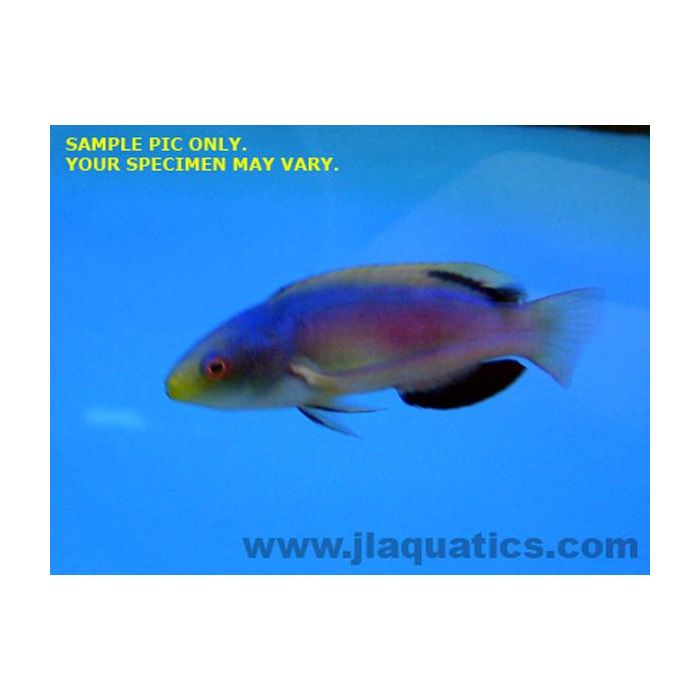Scott's (Male) Fairy Wrasse (Australia)
Wrasses are prone to jumping from the aquarium when startled or excited so we recommend a secure lid. They feel most secure when there is plenty of live rock to hide in, as well as open space for swimming. Most species may be kept in pairs or harems as long as they are added together or females first. They do not appreciate living with other species of wrasse, so any aquarium with several species must be large enough and the most peaceful species added first.
They should be fed two to three times a day plenty of high quality meaty items, frozen Mysis shrimp, krill, chopped seafood, marine algae and Spirulina.
Fairy wrasses are easy to keep and have active personalities. They are safe with most invertebrates except small shrimp and crabs. They do not bother corals or anemones. They may bully smaller fish such as flasher wrasses, however most are not big enough to live with large or very aggressive fish, either. Most species can be kept together in systems at least 100 gallons, with the most peaceful species added first.
At night time fairy wrasses hide in the rockwork and wrap themselves in a mucus cocoon to hide their scent from predators. This cocoon may be visible in the morning, and will soon dissipate into the water, and a new cocoon created each night.
The spectacular Scott's wrasse displays an incredible variety of color morphs, but all sport a rainbow of vivid colors arranged in broad blotches over the body and fins. Its background body color is typically deep forest green to navy; many fish have a large scarlet patch on their sides, and some have velvety black edging to their fins, although others have lemon yellow fins. Females are colored in more subdued warm shades. This species is able to stand its ground against other fish, and is very aggressive towards other fairy wrasses. It grows to 4 inches and needs an aquarium of at least 50 gallons.
Customers who bought this also purchased
 Sailfin Tang (Red Sea)Out of stock
Sailfin Tang (Red Sea)Out of stock Singapore Angel (Asia Pacific)Out of stock
Singapore Angel (Asia Pacific)Out of stock
















